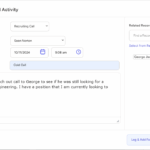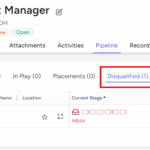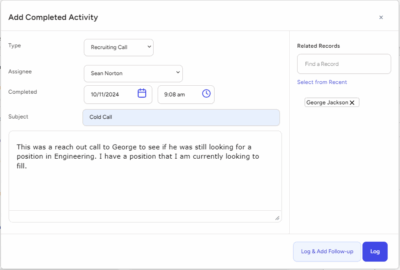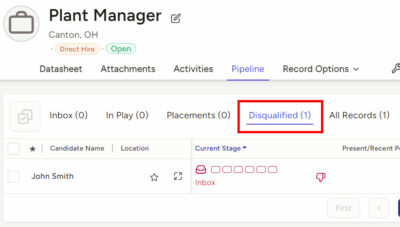The recruitment industry is fast-paced, competitive, and requires constant adaptation to new trends, technologies, and client demands. For agency recruiters and search consultants, the stakes are high, as every misstep can affect client relationships, candidate experience, and ultimately, your agency’s reputation. Success in this field depends on avoiding common pitfalls and continually refining your approach.
Whether you’re an experienced recruiter or just starting out, it’s crucial to understand where things can go wrong and how to prevent costly mistakes. In this article from Top Echelon Recruiting Software, we’ll explore the top five mistakes that recruitment agencies make and offer strategies for avoiding them, helping you enhance your service quality, client satisfaction, and overall performance.
1. Poor Communication With Clients and Candidates
One of the most common mistakes recruitment agencies make is failing to maintain consistent, clear communication with both clients and candidates. This issue manifests in several ways, including:
- Failing to set expectations early: Not defining clear timelines or deliverables from the start can lead to misunderstandings, misaligned expectations, and frustration.
- Lack of transparency: When recruiters are not transparent about the recruitment process, salary expectations, or candidate feedback, trust is lost, leading to damaged relationships.
- Inconsistent updates: Both clients and candidates expect regular updates on their status, even if there is no new information. A lack of communication can leave both parties feeling neglected or confused.
How to Avoid This Mistake
1. Set Clear Expectations at the Outset
From the first interaction with a client, make sure to establish clear expectations around timelines, deliverables, and the recruitment process. Ask probing questions about what the client is looking for, clarify their ideal timeline for filling the position, and explain the stages of your recruitment process.
For candidates, ensure they understand the timeline of the hiring process, what steps are involved, and what they can expect from you regarding feedback and updates.
2. Maintain Regular Communication
Even when there is no news, communicate with your clients and candidates regularly. Weekly check-ins, whether by phone or email, can reassure clients that you’re actively working on their searches and keep candidates engaged. Use automated tools like applicant tracking systems (ATS) to remind yourself when to send updates, but make sure each message is personalized and relevant.
3. Be Honest and Transparent
If there’s a delay, a challenge with sourcing candidates, or a shift in the client’s requirements, communicate this information as soon as possible. Transparency fosters trust, and clients will appreciate your proactive communication, even when things aren’t going according to plan.
2. Focusing on Quantity Over Quality
In the race to fill roles quickly, some recruitment agencies make the mistake of prioritizing the quantity of candidates presented to clients over the quality of those candidates. This can lead to several issues, including:
- Wasting the client’s time: Presenting a large number of unqualified candidates for the sake of volume frustrates clients and reflects poorly on your ability to understand their needs.
- Burning out candidates: Constantly sending candidates to interviews for roles that aren’t a good fit can cause them to lose trust in your agency and be less likely to engage with you for future opportunities.
- Damaging your agency’s reputation: Clients rely on recruiters to curate candidates who match their requirements, and presenting poorly qualified candidates can hurt your credibility.
How to Avoid This Mistake
1. Deeply Understand the Client’s Needs
Take the time to fully understand your client’s needs before you begin sourcing candidates. This includes not only the technical requirements of the role but also the company culture, the team dynamics, and the type of candidate that will thrive in that environment. Ask detailed questions about the qualities they prioritize and the pain points they are trying to solve with this hire.
2. Be Selective with Candidates
Focus on quality over quantity by being selective with the candidates you present. Rather than sending over every candidate who fits a general job description, carefully screen each individual to ensure they meet the client’s specific needs and expectations. This may mean fewer candidates, but those you do present will be more likely to progress through the interview process, enhancing your client’s trust in your judgment.
3. Personalize Candidate Matching
Tailor your candidate recommendations to each role. Instead of relying solely on keyword matching or qualifications, dig deeper into each candidate’s experience, career goals, and personal preferences. This allows you to present candidates who are not only qualified but also genuinely interested in the position and a good fit for the client’s culture.
3. Failing to Build Strong Relationships with Clients
Some recruitment agencies make the mistake of treating client relationships as transactional rather than long-term partnerships. This approach can lead to dissatisfaction and missed opportunities for repeat business. Common symptoms of this mistake include:
- Lack of client engagement: Not taking the time to understand the client’s business, long-term goals, and pain points can result in missed opportunities to provide real value.
- Inflexibility: If you approach every client with the same recruitment strategy, without customizing your service to their unique needs, you risk alienating clients who are looking for a tailored solution.
- Neglecting post-placement follow-up: Once a candidate is placed, some agencies fail to check in with the client to ensure satisfaction and discuss future recruitment needs.
How to Avoid This Mistake
1. Focus on Building Partnerships, Not Just Transactions
View your clients as long-term partners, not one-off customers. Take the time to understand their business objectives, company culture, and challenges beyond the immediate role you’re filling. This will allow you to provide more strategic value and position yourself as a trusted advisor, rather than just a service provider.
2. Customize Your Approach
Tailor your recruitment process to each client’s unique needs. Whether it’s adjusting your candidate sourcing strategy, offering insights on market trends, or providing consultation on compensation and benefits, customize your service to meet each client’s expectations and position yourself as an indispensable partner.
3. Follow Up Post-Placement
Once a candidate has been placed, follow up with the client to ensure satisfaction. This not only shows that you care about the long-term success of the placement but also provides an opportunity to discuss any future recruitment needs and maintain the relationship.
4. Ignoring Employer Branding and Candidate Experience
In today’s candidate-driven market, employer branding and candidate experience are critical factors in attracting top talent. Recruitment agencies that neglect these areas often struggle to engage high-quality candidates. Mistakes in this area include:
- Not conveying the client’s employer brand: If you don’t take the time to understand and communicate your client’s employer brand, you risk presenting candidates who aren’t aligned with the company’s values or culture.
- Neglecting candidate experience: A poor recruitment experience can turn candidates away, even if they’re interested in the role. This includes slow response times, lack of feedback, and impersonal communication.
How to Avoid This Mistake
1. Understand and Promote Employer Branding
Make it a priority to understand your client’s employer brand and what makes their company an attractive place to work. Communicate these unique selling points to candidates throughout the recruitment process, ensuring that they not only understand the job role but also the company’s culture, values, and long-term opportunities.
2. Prioritize Candidate Experience
Provide a seamless, respectful, and professional experience for every candidate you engage with, whether they’re hired or not. This means timely communication, personalized interactions, and constructive feedback throughout the process. Even if a candidate doesn’t get the job, they should leave the process with a positive impression of your agency.
3. Use Feedback Loops to Improve
Collect feedback from candidates about their experience working with your agency and the hiring process. Use this feedback to identify areas for improvement and ensure that you’re constantly refining the candidate experience.
5. Overcommitting and Under-Delivering
Recruitment agencies sometimes make the mistake of overpromising in an effort to win business, but under-delivering can harm your reputation and client trust. This often occurs when:
- Agencies take on too many clients or roles at once: Spreading your team too thin can lead to missed deadlines, poor candidate sourcing, and ultimately a lower quality of service.
- Making unrealistic promises: Telling clients that you can fill roles faster than is realistically possible, or committing to targets you can’t meet, leads to disappointment and frustration.
- Not managing client expectations: Failing to set realistic expectations at the start of the process can result in a mismatch between what the client expects and what you can deliver.
How to Avoid This Mistake
1. Be Realistic About Your Capacity
Know your limits and be honest with yourself and your clients about what you can handle. It’s better to take on fewer clients or roles and deliver exceptional service than to overcommit and fail to meet expectations. If your agency is stretched too thin, consider hiring additional staff or using automation tools to streamline processes.
2. Set Realistic Expectations
During initial conversations with clients, be upfront about what is realistically achievable in terms of timelines, candidate availability, and market conditions. Setting clear expectations from the start will help prevent disappointment later on and build trust.
3. Under-Promise, Over-Deliver
Whenever possible, aim to exceed client expectations rather than just meeting them. This could mean delivering a higher caliber of candidates, providing faster turnaround times, or offering additional market insights. By under-promising and over-delivering, you can consistently delight your clients and position your agency as a top performer.
In the fast-moving world of recruitment, mistakes are inevitable, but learning to avoid the most common ones can greatly enhance your agency’s reputation, improve client relationships, and lead to more successful placements. By focusing on clear communication, prioritizing quality over quantity, building long-term client partnerships, enhancing the candidate experience, and managing expectations, you can set your recruitment agency apart from the competition.
Recruitment agencies that are proactive, adaptable, and committed to continuous improvement are more likely to thrive in the long term. By recognizing these common mistakes and implementing the strategies outlined in this article, you can avoid pitfalls and position your agency for sustained success in a competitive industry.








